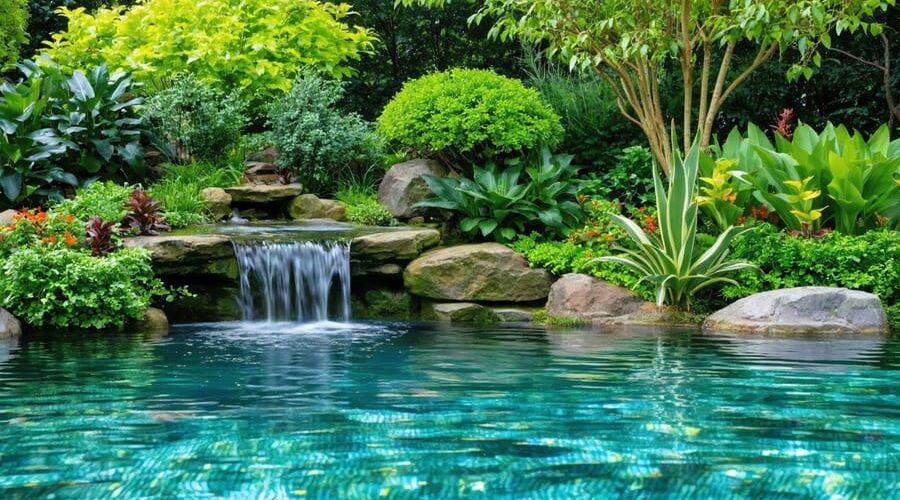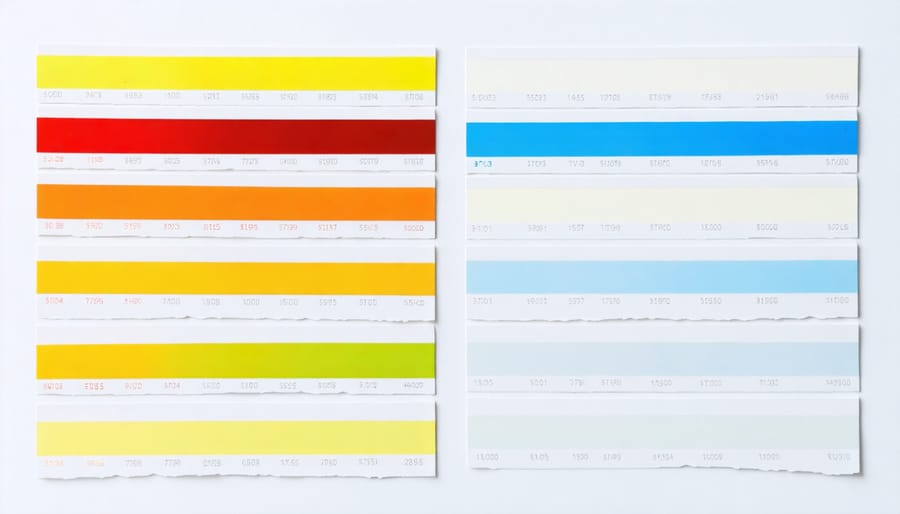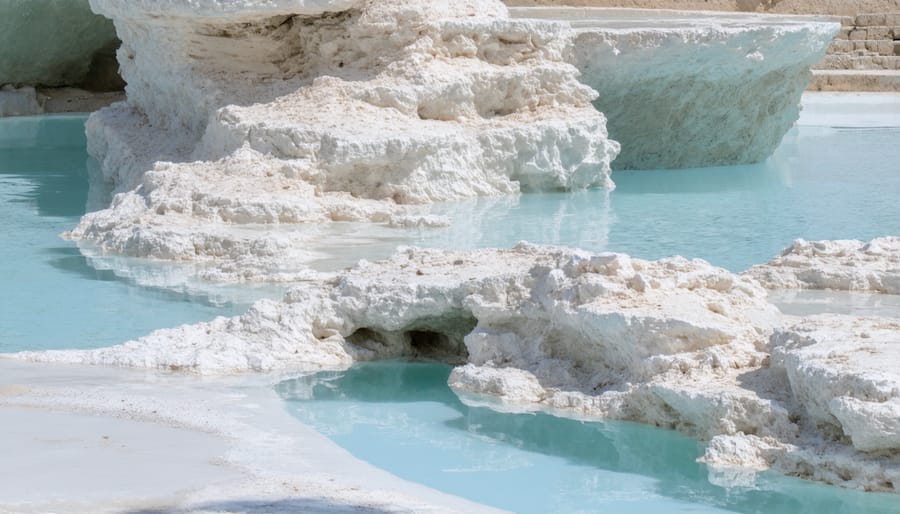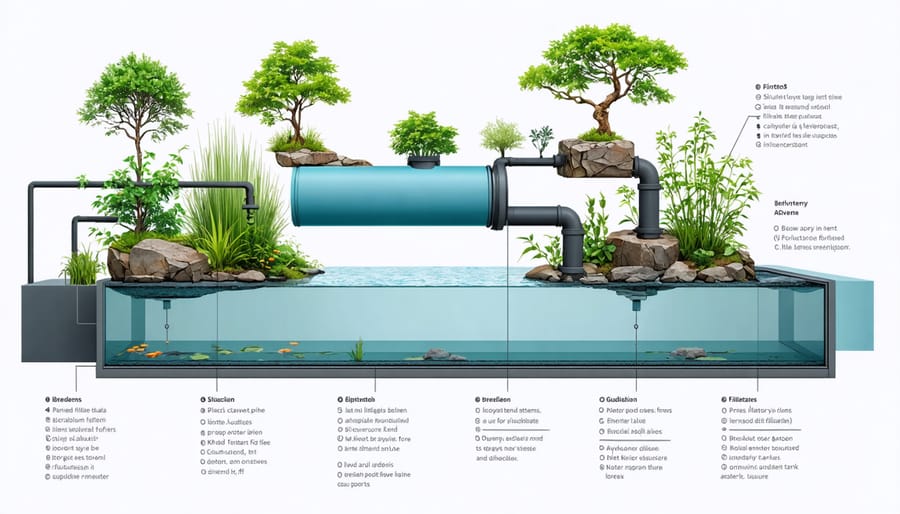
Hard Water Wreaking Havoc on Your Pond? Here’s Your Fix
Hard water wreaks havoc on your water garden, leaving unsightly mineral deposits, stressing fish, and stunting plant growth – but solving this common problem doesn’t require complex chemistry or expensive equipment. Testing your water’s hardness level with a simple strip test provides the crucial first step in tackling mineral buildup. Once you know your numbers, implementing solutions becomes straightforward: install a water softener system for whole-pond treatment, use chemical treatments like pH adjusters to balance mineral content, or incorporate natural methods like peat moss filtration to gradually reduce hardness levels. Whether you’re dealing with cloudy water, scaling on surfaces, or struggling aquatic plants, understanding and managing water hardness transforms your water garden from a constant challenge into a thriving ecosystem. This guide walks you through proven methods to identify, treat, and prevent hard water issues, helping you maintain crystal-clear water and healthy aquatic life.
Understanding Your Hard Water Problem
Testing Your Water Hardness
Testing your water’s hardness level is simpler than you might think, and you’ve got several reliable options to choose from. The easiest method is using test strips, which you can find at any local pool supply store or garden center. Simply dip the strip in your water and compare the color change to the chart on the package – it’s that straightforward!
For more precise results, consider using a digital water hardness tester. While slightly pricier, these devices give you exact readings in parts per million (ppm) or grains per gallon (gpg). Most water gardens should aim for hardness levels between 150-300 ppm.
You can also send a water sample to your local extension office or water testing laboratory for a comprehensive analysis. This method provides the most detailed results and can identify other water quality issues you might need to address.
As a general rule of thumb, if you notice scale buildup on your pump equipment or white residue around water features, you’re likely dealing with hard water above 300 ppm. Regular testing every few months helps you stay on top of changes and adjust your treatment approach accordingly.

Reading the Signs
Spotting hard water problems in your pond isn’t tricky once you know what to look for. The most obvious sign is a white, chalky residue around the edges of your pond or on underwater equipment. This crusty buildup, known as limescale, often appears on pond pumps, filters, and decorative features.
Keep an eye on your pond plants too. If you notice white spots on plant leaves or a cloudy film on the water surface, you’re likely dealing with hard water. Fish behavior can also be telling – if they’re rubbing against surfaces more than usual or showing signs of stress, the water hardness might be to blame.
Check your pond rocks and decorative features regularly. A rough, scaly texture or whitish deposits are clear indicators of hard water. You might also notice that your pond loses water more quickly than usual, as hard water tends to evaporate faster, leaving mineral deposits behind.
Your filtration system could reveal signs too – if it needs cleaning more frequently or shows rapid calcium buildup, you’re definitely dealing with hard water issues.

Immediate Solutions for Hard Water Issues
Water Softening Methods
There are several effective methods to tackle hard water issues in your pond, each with its own benefits. One of the simplest approaches is using water conditioning products, which neutralize minerals like calcium and magnesium. These treatments are easy to apply and work quickly, making them perfect for immediate results.
Installing a mechanical water softener is a more permanent solution. These systems use ion exchange to remove hardness-causing minerals, replacing them with sodium ions. While initially more expensive, they provide consistent results and require minimal maintenance once set up.
Natural solutions can also be effective. Adding peat moss to your filtration system helps reduce water hardness gradually while maintaining a natural balance. Carefully placed limestone rocks can help regulate mineral content, though this method requires regular monitoring to prevent over-correction.
For smaller ponds, reverse osmosis systems offer precise control over water quality. These systems remove virtually all minerals, allowing you to adjust hardness levels exactly as needed. However, they work relatively slowly and may need supplementary mineralization to maintain healthy water chemistry.
Rain water collection systems provide naturally soft water and can be used to top up your pond or dilute hard water. This eco-friendly approach works well in areas with regular rainfall but may need to be combined with other methods during dry seasons.
Natural Remedies
Nature offers several effective solutions for managing hard water in your pond or water feature. One of the most popular approaches is using barley straw, which naturally helps reduce mineral buildup when submerged in water. Simply place a mesh bag of barley straw near your pond’s water flow, replacing it every 4-6 months for best results.
Adding specific water garden plants can also help manage hard water naturally. Water lilies and hornwort are excellent at absorbing excess minerals, while helping maintain water quality. Cattails and bulrushes are particularly effective at filtering minerals through their root systems.
Another natural approach is using coconut fiber (coir) as a filtering medium. Place it in your filtration system or in mesh bags around the pond. The fibers naturally trap minerals and gradually help soften water over time.
Indian almond leaves are gaining popularity as a natural water softener. When added to pond water, they release tannins that slightly lower pH levels and help counter the effects of hard water. As a bonus, these leaves also have mild antibacterial properties that can benefit pond life.
Remember to introduce these natural solutions gradually and monitor your water parameters regularly. While these remedies work more slowly than chemical treatments, they provide a gentler, more sustainable approach to managing hard water issues.
Long-Term Management Strategies
Filtration Solutions
When it comes to tackling hard water issues in your water garden, advanced filtration solutions offer some of the most effective and long-lasting results. Modern smart water management systems have revolutionized how we handle water quality, making it easier than ever to maintain optimal conditions.
One of the most popular filtration options is the reverse osmosis (RO) system. Think of it as a super-fine strainer that removes dissolved minerals, including the calcium and magnesium that cause water hardness. While initially more expensive than basic filters, RO systems can dramatically improve water quality and reduce maintenance needs over time.
Water softeners present another excellent filtration solution. These systems use ion exchange to swap hardness minerals for sodium ions, effectively softening the water. They’re particularly useful for larger ponds and water features where scale buildup is a persistent problem.
For those seeking a more natural approach, mechanical filters combined with biological filtration can help manage hard water effects. These systems use layers of different media to trap particles while beneficial bacteria help break down harmful compounds. Adding zeolite or similar mineral-absorbing materials to your filter can also help reduce water hardness gradually.
Remember to maintain your chosen filtration system regularly. Clean or replace filter media as recommended, check for proper flow rates, and monitor water parameters to ensure optimal performance. Starting with a good filtration system can prevent many hard water problems before they begin, saving you time and effort in the long run.
Consider installing a pre-filter to extend the life of your main filtration system. This simple addition can catch larger particles before they reach your primary filter, improving overall efficiency and reducing maintenance frequency.

Chemical Treatments
Chemical treatments offer a reliable way to manage hard water issues while keeping your water garden healthy and balanced. One of the most effective options is adding a water softening agent containing potassium or sodium-based compounds, which work by exchanging calcium and magnesium ions with softer minerals.
For immediate treatment, consider using phosphate-based sequestrants. These chemicals bind with calcium and magnesium, preventing them from forming scale or affecting your plants and fish. They’re particularly useful for quick results, though they’ll need regular reapplication.
If you’re concerned about your fish, opt for fish-safe descaling solutions specifically designed for ponds. These gentle formulations break down mineral deposits without harming your aquatic pets or beneficial bacteria. Apply these treatments monthly during warm seasons and quarterly during cooler months.
For plant-focused gardens, specialized pH adjusters can help balance water chemistry. These products typically contain natural acids that safely lower pH levels, making nutrients more available to your plants. Start with small doses and test regularly to maintain optimal levels.
Remember to always read product labels carefully and follow dosage instructions precisely. It’s better to start with lower doses and adjust as needed rather than risk over-treatment. Keep a log of your chemical applications and water test results to track effectiveness over time.
For best results, combine chemical treatments with regular water testing and mechanical filtration. This integrated approach ensures longer-lasting results and helps maintain a healthy ecosystem in your water garden.
Preventive Measures
Taking proactive steps to prevent hard water issues is much easier than dealing with problems after they arise. Start by installing a water softener system at your main water source – this is particularly important if you live in an area known for hard water. Regular water testing is essential to maintain a healthy pond ecosystem and catch potential issues early.
Consider installing a pre-filter system for your pond’s water supply to reduce mineral content before it enters your water feature. This simple step can significantly reduce scale buildup and help protect your pond water quality long-term.
Regular maintenance is key to preventing hard water problems. Schedule monthly cleanings of your pump and filtration system to remove any mineral deposits before they become stubborn. Using natural solutions like adding peat moss or Indian almond leaves can help maintain proper pH levels and reduce mineral concentration naturally.
Keep an eye on your water features and equipment for early signs of scale formation. Wipe down visible surfaces weekly with a soft cloth to prevent mineral buildup. During water changes, use treated or filtered water rather than straight tap water to minimize introducing additional minerals.
Consider installing a reverse osmosis system for smaller ponds or water features. While initially more expensive, it’s highly effective at preventing hard water issues. For larger ponds, implementing a regular partial water change schedule using softened water can help maintain optimal mineral levels.
Remember to check and clean your aeration systems regularly, as these can become clogged with mineral deposits. Installing water conditioners or using chemical treatments designed specifically for hard water can provide an additional layer of protection against scale formation.
Tackling hard water issues in your water garden doesn’t have to be an overwhelming challenge. As we’ve explored throughout this guide, there are multiple effective approaches to managing and treating hard water problems, from quick fixes to long-term solutions. Whether you’re dealing with unsightly scale deposits, struggling plants, or concerned about your fish’s health, you now have the knowledge to take control of your water quality.
Remember that the key to success lies in first accurately testing your water hardness levels and then choosing the most appropriate solution for your specific situation. While water softeners and chemical treatments offer immediate results, natural methods like using peat moss or installing rain collection systems provide sustainable, eco-friendly alternatives that can be just as effective over time.
Don’t forget to maintain regular monitoring of your water parameters and adjust your treatment approach as needed. Sometimes, combining different methods might give you the best results. For instance, you might use a mechanical filter to remove existing mineral deposits while implementing preventive measures to stop future buildup.
The investment in managing your hard water issues will pay off in multiple ways: healthier aquatic plants, happier fish, better-functioning equipment, and a more beautiful water garden overall. Plus, the knowledge and skills you’ve gained will serve you well in maintaining your water garden for years to come.
Start with small steps if you feel overwhelmed. Begin by testing your water and implementing one solution at a time. Monitor the results and adjust as needed. Remember that improving water quality is an ongoing process, not a one-time fix.
Take action today to create the healthy, thriving water garden you envision. Your plants, fish, and garden features will thank you with improved growth, vitality, and longevity. With persistence and the right approach, you can transform your hard water challenges into a manageable part of your water gardening routine.
